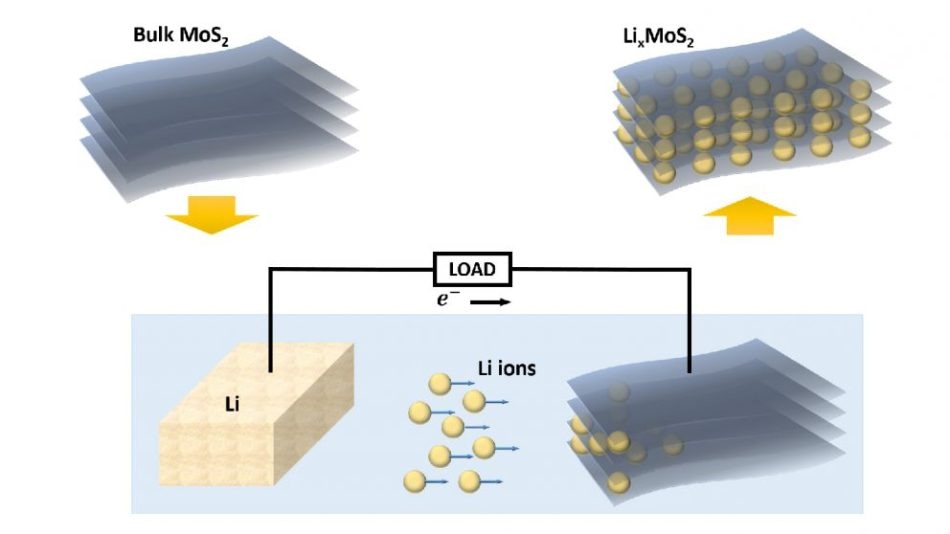Oct 24 2016
 Introducing lithium ions between layers of molybdenum sulfide can tune the thermal conductivity of the material. (Credit: NC State University)
Introducing lithium ions between layers of molybdenum sulfide can tune the thermal conductivity of the material. (Credit: NC State University)
A research team has discovered a surprising way to direct the thermal conductivity of 2D materials, which will assist electronics designers to dissapate heat in electronic gadgets that utilize these materials.
2D materials consist of a layered structure, with each layer comprising of weak bonds between the layers, or “out of plane”, and strong bonds horizontally, or “in plane.”
These materials have exceptional chemical and electronic properties, and have the potential for use in developing flexible, thin, lightweight electronic gadgets.
For several of these potential applications, it is crucial to be able to dissipate heat in an efficient manner. This can be hard to achieve. In 2D materials, heat is conducted in a different way in plane than it is out of plane. For instance, in one group of 2D materials, known as TMDs, heat is conducted at 100 W/mK in plane, but at just 2 W/mK out of plane. This gives it a "thermal anisotropy ratio" of roughly 50.
To comprehend the thermal conduction properties of 2D materials in a better way, researchers from North Carolina State University, the University of Illinois at Urbana-Champaign (UI) and the Toyota Research Institute of North America (TRINA) started analyzing molybdenum disulfide (MoS2), which is a TMD.
The team discovered that, by creating disorder to the MoS2, they could greatly modify the thermal anisotropy ratio. The disorder was created by adding lithium ions between the layers of MoS2. Two things occur simultaneously when the lithium ions are introduced: the layers of the 2D material are put out of alignment with each other, and the MoS2 is forced to reorganize the structure of its component atoms.
When the ratio of lithium ions to MoS2 touched 0.34, the in-plane thermal conductivity was 45 W/mK, and the out-of-plane thermal conductivity reduced to 0.4 W/mK - boosting the material’s thermal anisotropy ratio from 50 to over 100. In other words heat was more than twice as likely to travel in plane - along the layer, instead of between the layers.
This was as good as it got. Incorporating fewer lithium ions reduced the thermal anisotropy ratio. Incorporating more ions also made it reduce. But in both scenarios, the ratio was impacted in a predictable way, meaning that the thermal conductivity of material and thermal anisotropy ratio could be tuned by the researchers.
This finding was very counter-intuitive. The conventional wisdom has been that introducing disorder to any material would decrease the thermal anisotropy ratio. But based on our observations, we feel that this approach to controlling thermal conductivity would apply not only to other TMDs, but to 2D materials more broadly. We set out to advance our fundamental understanding of 2D materials, and we have, but we also learned something that is likely to be of practical use for the development of technologies that make use of 2D materials.
Jun Liu, Assistant Professo, NC State
The paper, “Tuning Thermal Conductivity in Molybdenum Disulfide by Electrochemical Intercalation,” is published in the journal Nature Communications. Co-corresponding authors of the paper are Gaohua Zhu of TRINA and David Cahill of UI. Co-authors are Ruigang Zhang and Debasish Banerjee of TRINA, and Qiye Zheng and Dongyao Li of UI. The work was supported by TRINA.